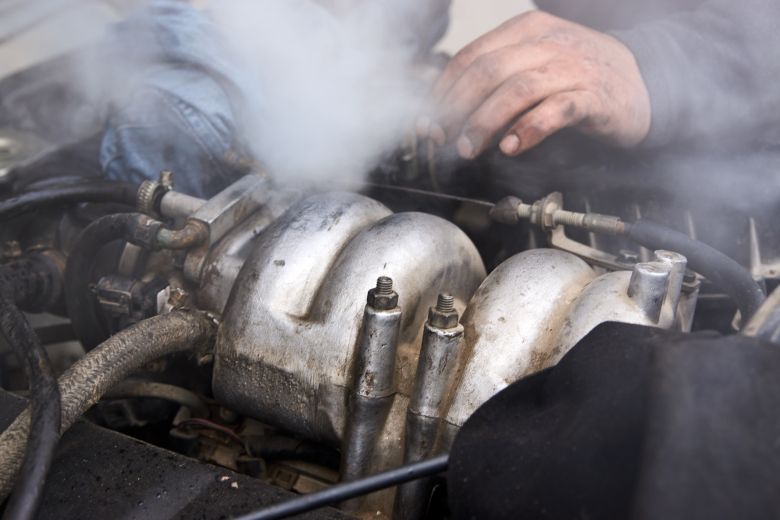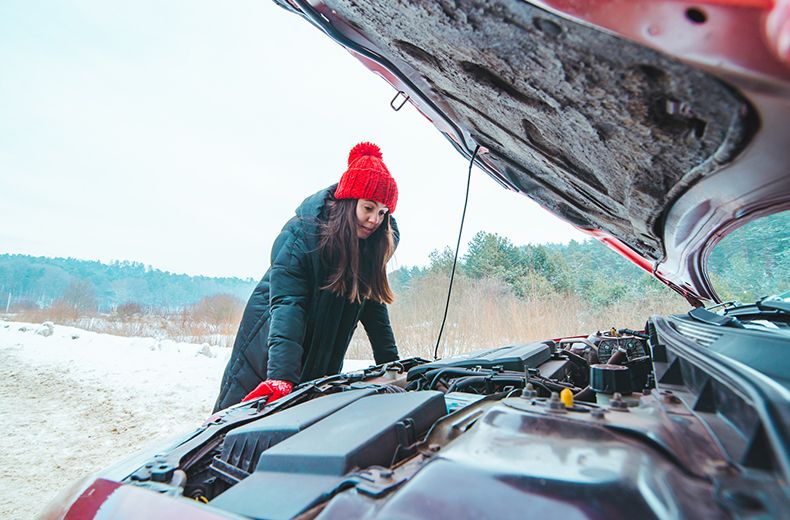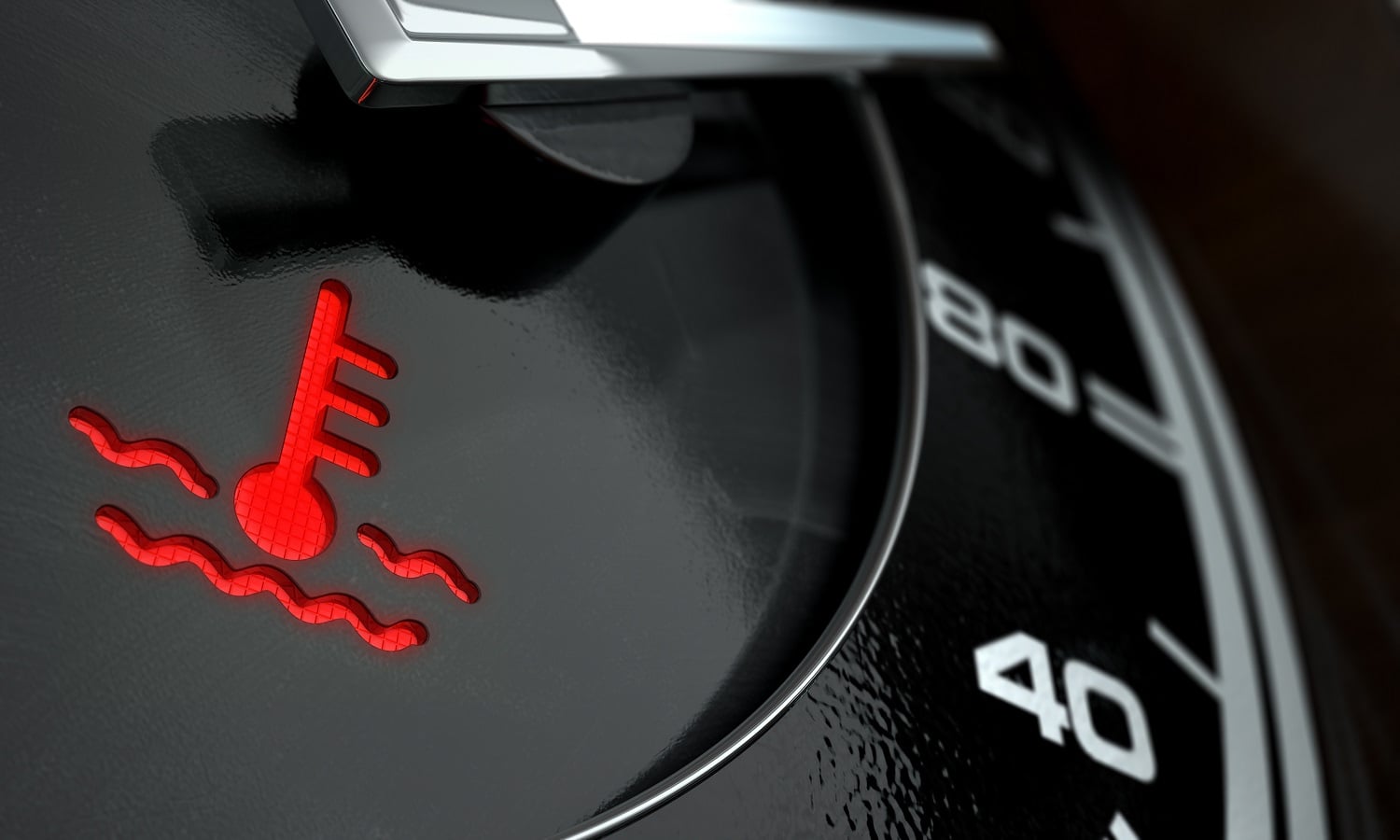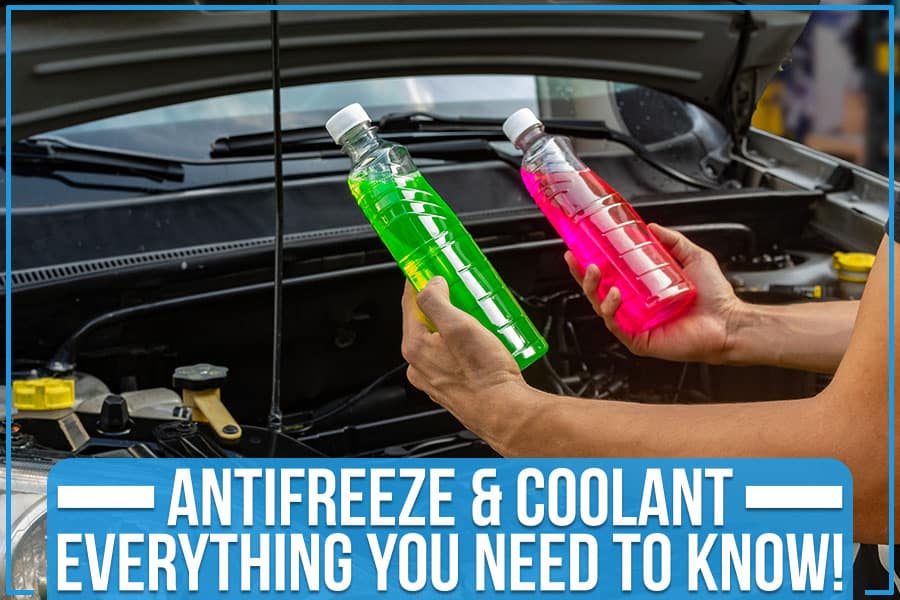Can a Bad Radiator Cause White Smoke
Yes, a bad radiator can cause white smoke if it leads to engine overheating. Overheating may result in a blown head gasket, which emits white smoke.
Dealing with white smoke emerging from your vehicle can be alarming. A bad radiator can very well be the culprit behind this issue, as it plays a crucial role in the engine’s cooling system. If the radiator fails, the engine can overheat, potentially causing serious damage to internal components such as the head gasket.
A compromised head gasket then allows coolant to enter the combustion chamber, where it burns and produces white smoke. Car owners should be attentive to such signs, as timely diagnosis and repair are vital in preventing further engine damage and ensuring vehicle safety. Regular maintenance of the cooling system can ward off such problems, keeping your engine running smoothly and smoke-free.
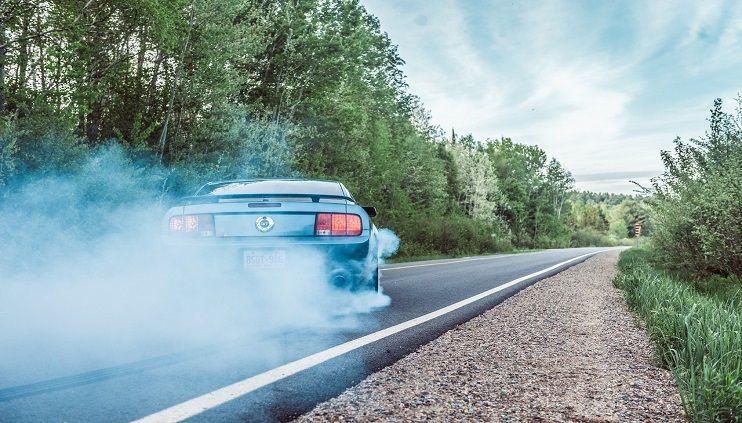
Credit: getresqued.com
The Role Of A Radiator In Your Vehicle
The role of a radiator in your vehicle is crucial for engine health. A well-functioning radiator keeps the engine at the right temperature. Let’s dive into the basics of how it functions.
Coolant Circulation Basics
The radiator’s primary job is to circulate coolant through the engine. This process starts when coolant absorbs heat from the engine. It then flows to the radiator where it releases this heat into the air.
- The water pump sends coolant into the engine.
- Next, the heated coolant moves to the radiator.
- Finally, the cool air passing through the radiator cools it down.
Heat Dissipation Functions
Once in the radiator, the coolant must lose its heat. The radiator does this by allowing air to pass through its fins and tubes. This part of the process is called heat dissipation.
| Component | Function |
|---|---|
| Coolant | Absorbs engine heat |
| Radiator Fins | Increases surface area for cooling |
| Fan | Draws cool air through the radiator |
A faulty radiator disrupts this process. It may lead to engine overheating. In some cases, coolant might burn inside the engine. This burning causes white smoke from the exhaust.
Credit: www.quora.com
Symptoms Of A Bad Radiator
A car’s radiator is like a guardian. It keeps the engine cool and running well. Sometimes, it gets sick. When this happens, your car tells you with signs. Here, we’ll talk about these signs, so you keep your car happy and healthy.
Overheating Engine
An engine running too hot is a red flag. It means the radiator can’t manage the engine’s temperature. Check the dashboard for the temperature gauge. If it points high, it’s time to investigate.
- Steam from the hood
- Warning lights on the dashboard
- The engine smells hot
Leakage And Fluid Discoloration
Radiators hold coolant. This liquid should be brightly colored, like neon green or pink. If it looks dirty or rusty, there’s trouble. Below are signs of leaks and bad fluid.
| Sign | What You See or Smell |
|---|---|
| Puddles under Car | Coolant escaping |
| Odd Smell | Sweet, syrup-like odor from coolant |
White Smoke Woes: Possible Causes
When your car starts belching white smoke, it’s like a cry for help. This unwelcome signal can mean several things. Don’t ignore it! Your engine’s health may be at stake. Let’s diagnose together and get your car back on track.
Condensation In The Exhaust
Condensation is a common sight, especially on cold mornings. When your exhaust pipe looks like a steam train, it’s usually water vapor. As your engine warms up, the white smoke should disappear.
- Short trips: Not allowing the engine to warm up fully can lead to buildup.
- Weather: During winter, more condensation forms in the exhaust system.
Head Gasket Failures
Head gasket failures are more serious. They can cause persistent white smoke. This type of smoke may have a sweet smell.
| Sign | Meaning |
|---|---|
| Milky oil cap | Coolant mixing with the oil |
| Bubbling radiator | Possible head gasket breach |
| Overheating engine | Heat is not transferring properly |
Check these components promptly to avoid engine damage. Your radiator may not always be the culprit, but it’s wise to investigate every possible cause.

Credit: www.dubizzle.com
Linking Radiator Issues And White Smoke
Many car owners dread seeing white smoke billowing from their exhaust. This white smoke can signal serious engine problems. Understanding the connection between radiator issues and white smoke is important for quick diagnostics and repair.
Coolant Leak Into Combustion Chamber
White smoke often points to coolant entering the combustion chamber. Here’s how it unfolds:
- Cracked Head or Gasket: Damaged head gaskets or cracked engine heads allow coolant to seep in.
- Combustion Process: Coolant mixes with fuel, combusting and converting to steam.
- Visible Sign: Steam exits via the exhaust, showing up as white smoke.
Indirect Effects Of Radiator Damage
While a bad radiator isn’t directly responsible for white smoke, it can contribute indirectly:
- Overheating: A failing radiator causes engine overheating.
- Engine Damage: Overheating may lead to head gasket failure.
- Leakage: The damaged gasket permits coolant to mix with fuel.
| Radiator Issue | Possible Consequence | Resulting White Smoke? |
|---|---|---|
| Leaks | Low Coolant Levels | Indirectly |
| Corrosion | Engine Overheat | Indirectly |
| Blocked Passages | Poor Circulation | Indirectly |
Regular check-ups and maintenance can prevent these issues. At the first sign of white smoke, consult with a mechanic to avoid major engine damage.
Diagnosing The True Culprit
Is white smoke billowing out of your exhaust? It can signal a problem with your vehicle’s radiator. Diagnosing the true culprit takes a careful approach. White smoke might mean coolant is burning in the combustion chamber.
Professional Inspection Tips
Seek expert eyes to crack the case. Mechanics use advanced tools to pinpoint issues. They check for blown head gaskets and cracked engine blocks. Here are professional tips:
- Cooling system pressure test: This finds leaks you can’t see.
- Engine block test: It detects combustion gases in the coolant.
- Inspection of the exhaust system: This zeroes in on the smoke’s source.
Diy Diagnostic Steps
Ready to play detective? Follow these DIY steps to uncover the truth:
- Check coolant level: A low level might mean a leak.
- Look for coolant in oil: It appears milky or foamy on the dipstick.
- Observe exhaust color: Constant white smoke is a warning sign.
Repairing A Bad Radiator And Related Problems
A malfunctioning radiator can lead to severe engine problems. If white smoke is billowing from your car, it’s a red flag for radiator or engine issues. Identifying and fixing a bad radiator early prevents further damage. This repair guide will briefly explore solutions for common radiator troubles and how they influence engine performance, specifically the white smoke concern.
Common Radiator Fixes
A well-functioning radiator is key to keeping your engine cool and operational. Here are some fixes that can bring your radiator back to life:
- Leak Repair: Seal any visible cracks or replace damaged hoses.
- Flush Radiator: Remove sediment build-up by flushing the system.
- Thermostat Check: Replace a faulty thermostat to ensure proper temperature regulation.
- Water Pump Inspection: Ensure the pump is circulating coolant efficiently.
Addressing Engine White Smoke
White smoke might indicate coolant entering the combustion chamber. This could mean a possible head gasket failure or a cracked engine block. Fixing these issues promptly is critical.
| Problem | Action Required |
|---|---|
| Head Gasket Leak | Replace the head gasket immediately. |
| Cracked Engine Block | Evaluate for repair or engine replacement. |
Regular maintenance and addressing these issues quickly will ensure your engine runs smoke-free and efficiently.
Preventive Measures And Regular Maintenance
White smoke from a car may signal a radiator problem. Regular checks and maintenance keep the car running smoothly. It’s like brushing teeth to prevent cavities. A well-kept radiator helps avoid serious engine issues.
Routine Radiator Check-ups
Think of radiator check-ups like regular doctor visits for your car. They help spot issues early on. Here’s a checklist for a fit radiator:
- Inspect coolant levels: Low levels can lead to overheating.
- Check for leaks: Coolant should not escape the system.
- Observe color: Coolant should be clean, not rusty or milky.
- Watch temperature: A steady gauge means a happy radiator.
Keeping Engine Health In Check
Protect your engine to prevent white smoke. These steps will help:
- Regular oil changes: Fresh oil keeps the engine smooth.
- Avoid extensive idling: It can stress the engine.
- Clean air filter: A dirty filter strains the engine.
Every part works together, like a team. Good teamwork means no white smoke. Stick to a schedule and your car will thank you.
Frequently Asked Questions On Can A Bad Radiator Cause White Smoke
Can A Faulty Radiator Lead To White Smoke?
A damaged radiator can cause white smoke if it leads to engine overheating. Overheating can result in a blown head gasket, which causes coolant to burn and produce white smoke from the exhaust.
What Causes White Smoke In Car Exhaust?
White smoke from a car’s exhaust often indicates coolant entering the combustion chamber. This can happen due to a cracked engine block, damaged cylinder head, or a failing head gasket.
Is White Exhaust Smoke Always A Serious Issue?
Not always. Thin white vapor, especially on cold mornings, is often just condensation burning off. However, persistent white smoke can point to significant engine problems like a coolant leak.
How Does A Radiator Malfunction Cause Engine Trouble?
A malfunctioning radiator fails to cool the engine effectively. This can lead to increased engine temperatures and subsequent damage, including cracked components, which may lead to smoke emission.
Conclusion
Understanding your vehicle’s warning signs is crucial. White smoke can often indicate a malfunctioning radiator. Tackling this issue promptly is key to maintaining engine health. Remember, regular maintenance is your best defense against such problems. Drive safe, and keep that radiator in check for a smoother journey.

